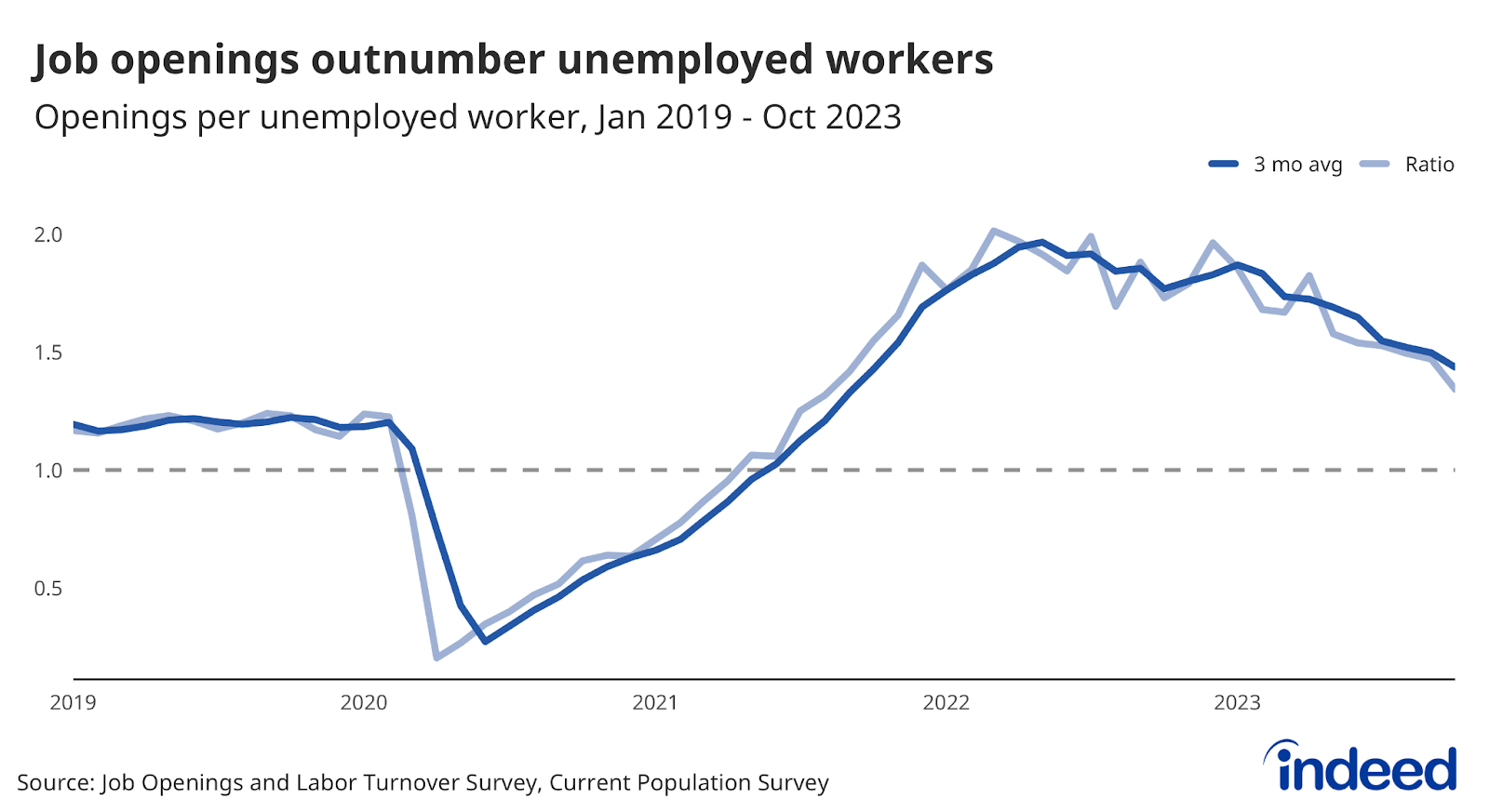Key points:
- There were 8.7 million job openings at the end of October, the lowest level since March 2021. Yet job openings are still up 22% from pre-pandemic levels.
- The ratio of job openings to unemployed workers, a much-cited metric of labor market tightness, dropped to its lowest level since August 2021.
- Meanwhile, hiring, quitting, and layoffs were essentially unchanged over the month, suggesting that the labor market is starting to settle down and not fall off a cliff.
This report should bring abundant holiday cheer as the probability of a soft landing continues to rise. While the number of job openings declined, hiring remained largely unchanged, a sign that the labor market isn’t falling off a cliff. A decline in openings without a spike in layoffs represents a relatively painless rebalancing between labor supply and labor demand. Yet hiring demand remains robust even with the large decline in October, and openings are up 22% from pre-pandemic levels. It is no longer a moderating labor market: It is a market that has moderated.
Over the past several years, policymakers and many economists have pointed to the elevated ratio of job openings to unemployed workers as a sign of an overheated labor market. But that thermometer is now showing a steady drop in temperature. There were 1.3 job openings per unemployed worker in October, down from a March 2022 peak of 2 and the lowest ratio since August 2021. Part of this drop is attributable to the rise in unemployment in October, but the majority of the decline has come from falling job openings.
And while employers may be somewhat more reluctant to make new hires, they’re also reluctant to let go of their current employees. The layoff rate held steady at 1% in October, unchanged from a year ago and still below its pre-pandemic trough. Persistently low layoff activity in sectors including Retail Trade and Accommodation & Food Services – which both employ large numbers of workers – is a positive sign that employers aren’t seeing large enough declines in demand to shed workers.
After years of excitement, the US labor market is ready for some boring times. The slowdown in the US labor market hasn’t been painless and many workers seeking a new opportunity are having a harder time finding work. However, the current state of the labor market suggests no further recalibration is necessary to bring the labor market back into balance. It’s already there.
